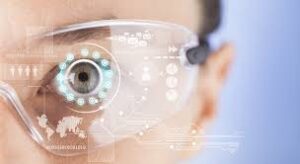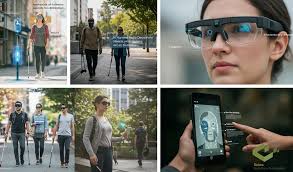
“AI-Powered Cameras Open a New World of Independence for the Blind 2025”

In a world where technology continues to shape and elevate the human experience, one of its most powerful impacts is being felt by a group that has long faced unique challenges: the visually impaired. Thanks to rapid advancements in artificial intelligence and computer vision, AI-powered cameras are transforming how blind and visually impaired individuals interact with the world around them, offering new levels of independence, confidence, and connection.
For decades, tools like white canes, guide dogs, and tactile maps have helped blind individuals navigate their environments. While this aid remains invaluable, it comes with limitations. Enter AI-powered wearable cameras—a revolutionary leap forward in assistive technology.
These smart devices, often worn like a pair of glasses or clipped onto clothing, are equipped with tiny high-definition cameras. What makes them groundbreaking isn’t just the hardware but the software: AI algorithms that process visual information in real time. They can read text, recognize faces, describe surroundings, and even identify obstacles or traffic signals.
Companies like OrCam, Envision, and Microsoft (with its Seeing AI app) are leading the charge in this space. These systems speak to users through a discreet earpiece or audio device, providing a verbal description of what the camera sees. From reading a restaurant menu to identifying a bus number or locating a dropped item, these tools turn everyday tasks into achievable moments of independence.
More Than Just Navigation—Empowerment

The benefits of AI-powered cameras go far beyond getting from point A to point B. They are empowering users to engage in social situations with greater ease and confidence. Recognizing familiar faces in a crowd or knowing who just entered a room can have a profound impact on one’s ability to participate fully in social life.
Moreover, these devices can also scan and read printed and digital text aloud—be it a book, a receipt, or the screen of a computer. For many blind users, this means greater access to education, employment, and self-expression.
Real Stories, Real Impact
Take Sarah, for example—a university student who lost her sight in her early teens. She describes her AI-powered camera glasses as “life-changing,” enabling her to study independently, find her way around campus, and even recognize classmates and professors.
Or James, a retired engineer who enjoys exploring his city. With the help of his smart camera, he confidently strolls through neighborhoods, shops at local markets, and enjoys his daily routines without needing constant assistance.
These stories are becoming more common as awareness of the technology grows and access expands.
Challenges and the Road Ahead

Despite the excitement, there are still hurdles to overcome. Affordability remains a major barrier for many people, especially in low-income or underserved communities. Accessibility advocates are pushing for greater insurance coverage and government support to make these devices more widely available.
There’s also room for improvement in the technology itself. While AI has come a long way, continued development is needed to make these tools more intuitive, responsive, and capable of adapting to complex, dynamic environments.
Privacy is another consideration. AI cameras collect and process a significant amount of data, raising questions about how personal information is stored, used, and protected. Companies must ensure transparency and security to maintain user trust.
A Brighter, More Inclusive Future
What’s clear is that AI-powered cameras represent a huge leap forward in inclusive technology. They’re not just about seeing—they’re about belonging. By enabling blind and visually impaired individuals to move through the world with greater ease, autonomy, and dignity, these innovations are helping create a society where everyone can thrive, regardless of physical ability.
As technology continues to evolve, the hope is that these advancements will become not only more powerful but also more accessible to all. Because true progress isn’t just about what we build—it’s about who we build it for.







